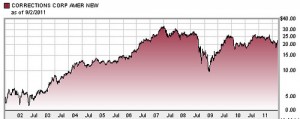 There are two basic types of mutual funds. Growth funds, that are seeking rapid growth, and value funds, that are looking for long term steady growth. Both play important parts of a portfolio, and both have different goals. The value fund, often called an income fund, looks to reduce volatility while still providing the investor with a good rate of return.
There are two basic types of mutual funds. Growth funds, that are seeking rapid growth, and value funds, that are looking for long term steady growth. Both play important parts of a portfolio, and both have different goals. The value fund, often called an income fund, looks to reduce volatility while still providing the investor with a good rate of return.
Value funds are made up of value stocks. These stocks are issued by companies that are usually well established. They have a proven business model, and they know how to make a profit. Their track record speaks for itself, and instead of seeking explosive growth, like a growth stock does, the value stocks are looking for consistent positive returns. When the company makes more money than they need to operate, they generally issue a dividend rather than reinvest the money back into the company. These dividends, while not guaranteed, are often substantially better than what can be found in CD’s or savings accounts (it’s that risk/reward tradeoff again). Value funds seek to capture these dividends by investing in multiple companies that are doing well; think Walmart (WMT) or Johnson & Johnson (JNJ).
Investing in value funds will help the investor to receive those year-over-year consistent gains. Much of these gains come in the form of dividends giving the fund stability. It does not shoot up in value, and does not sharply drop in value. The volatility is leveled out giving the investor much more comfort when looking at the returns on his or her portfolio.
While the lower volatility and modest gains are positive things in a value fund, they are also negatives. This is especially true when the market is doing well. As the stock market increases in value, the growth funds will shoot up. However, the value funds will continue their steady increase. When the market drops, the value funds will still drop. So while they are often safer investments, they are still subject to market risk.
A well diversified portfolio is one that will be better suited to weather financial storms. While it is tempting to put all your money in growth stocks to get those great returns, it is more important to diversify amongst growth and value stocks in order to capture the best of both worlds. These funds will perform differently at different times. When a growth fund is barely moving, a value fund may be increasing in value; when a value fund loses some value, a growth fund may shoot up sharply. When putting together your portfolio, try to divide the growth and value sections up equally. So put half of your large cap into large cap growth, and half into large cap value, etc. This will help create a widely diversified portfolio that, in the long run, will perform better.

Nice comparison of the two. I tend to prefer growth funds myself, but value funds are also very important as a part of an overall well diversified portfolio. The key can be knowing when to get heavy into one over the other and not being stuck when it begins to decline.
Thanks for the lesson. I guess I had a narrower definition of value stocks – or maybe I should say ‘under’ valued stocks. Stocks for good companies that are currently a good deal.
Good piece. I normally prefer value because when you look at longer periods of time, the go-go growth funds and steady-eddie value bunch even out. Because I’m not smart enough to know when growth will skyrocket, I’m more inclined to take the more steady approach.
Great post! Value stocks are definitely a key part in any well diversified portfolio that invests for the long term.
Good that you talk about funds and not stocks. I am against buying individual stocks unless you are a pro.A diversified portfolio should have both of these funds, no doubt.
I would agree. We are much more into investing in funds than individual stocks. We just don’t have the portfolio size to do that right now. Down the road maybe but right now diversification is the most important.